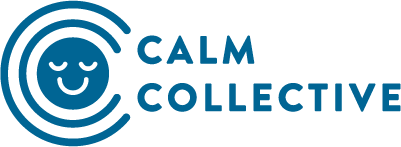How I’m learning to build my resilience muscle
“Resilience is a muscle built on failure”
-Ann Marie Houghtailing
Building your resilience - your mental capacity to recover quickly from adversity - is similar to training your muscles. It takes time and requires lots of patience and perseverance. Without regular practice, you may regress, but if you stick it out, you will see growth in your ability to overcome setbacks no matter how big or small.
So, why is building your resilience important?
People who lack resilience are more likely to feel overwhelmed in the face of a challenge and thus rely on unhealthy coping strategies such as avoidance, blaming, or self-medication. One study observed that individuals who had attempted suicide had significantly lower resilience scores compared to patients who had never attempted suicide.
In contrast, resilient individuals are more easily able to cope with stressors, regulate their emotions effectively, and focus on finding a solution to their problem. In “The Stoic Challenge: A Philosopher's Guide to Becoming Tougher, Calmer and More Resilient,” William B. Irvine explains how he likes to view setbacks as a challenge to his resourcefulness and resilience “devised and administered…by imaginary Stoic gods,” thus allowing him to stay calm and increasing his chances of finding a solution. While this way of thinking about setbacks was invented by the Stoics, in modern psychology, it is similar to the idea of the “framing effect”. By taking challenges using a more optimistic, hopeful lens, one can see them not as a be-all and end-all kind of situation, but more of a challenge that has a solution.
How does one develop their resilience muscle?
According to Resilience Alliance, there are Seven Resilience Muscles that are important to strengthening your overall resilience:
1. Positivity: Having the positivity to allow you to interpret situations differently and in a way that offers hope
2. Confidence: Being confident that you can succeed in the face of uncertainty
3. Priorities: Being able to have a clear vision of what to do and what is most important in the face of a challenge
4. Creativity: Being able to generate a wide range of ideas and solutions to tackle the problem at hand
5. Connection: Being able to rely back on your support channels
6. Structure: Being able to apply systems and structures to plan, coordinate, and diversify your energy and resources to tackle the situation
7. Experimenting: Being able to take calculated risks and try new ways of operating in the event of setbacks
In other words, to be able to build your resilience muscle, you have to learn how to deal with and overcome setbacks.
For me, the way I view resilience is that it is the ability to recognize the feelings that come with setbacks like anger, regret, stubbornness, but not let them take over. When I have recognized these patterns, I tend to try to stay positive by thinking of the small things that I am grateful for and making a mental note in my head. Lastly, I will jot them down in a reflection journal.
In the journal, I answer these questions:
1. What are you feeling at the moment of the setback?
2. Why are you feeling this way?
3. Upon writing down the feelings, is there a solution to these feelings?
4. What are you grateful for today?
5. Summarize today’s picture with a drawing.
According to PsychCentral, journaling provides some health benefits, be it clarifying your thoughts and feelings, or solving problems more effectively.
Why is it so hard to grow your resilience muscle?
If going through failure is how we build our resilience muscle, should we just go out of our way to seek experiences of failure to grow stronger? Of course, it’s easier said than done. Resilience muscles don’t grow overnight but rather with time, and we’ve been taught since young that failure is bad and something we must avoid. It’s something that I’ve struggled with as well, especially when I was not able to reframe my own failures and setbacks in a hopeful manner.
In October 2017, 2 months before my A-levels, a major exam in Junior College, I was facing a devastating family situation that took a psychological toll on me, and I was unable to get support from my parents. During a particularly bad fight with my dad, I decided to do something drastic to get out of the situation, which ended in me sustaining a compound lower spine fracture and two hairline fractures. Although I managed to survive without being paralyzed and even passed my exams, I never made it into my dream university. The reality was a lot to bear, and I struggled through a depressive period and tried to find other ways to cope by staying busy and working multiple part-time jobs.
What I realise now is that I was relying on unhealthy coping strategies and unable to recognise and deal with the feelings that overwhelmed me during this period. It’s taken time, and although my trauma is still there, I am working on myself to embrace the past and move forward, slowly building my resilience along the way. After 4 years, I have finally landed a part-time diploma at Singapore Polytechnic alongside working in a comfortable job and doing lots of mental health initiatives. I learned a lot about myself through self-introspection, going through details of how I managed to recover from other setbacks. I also started to note down what I experienced during setbacks or talked to a friend about it, helping me to see ways I could improve and what I did well at.
There is no one right way to build resilience, but with the right tools and support systems, we all can grow to be more resilient.
